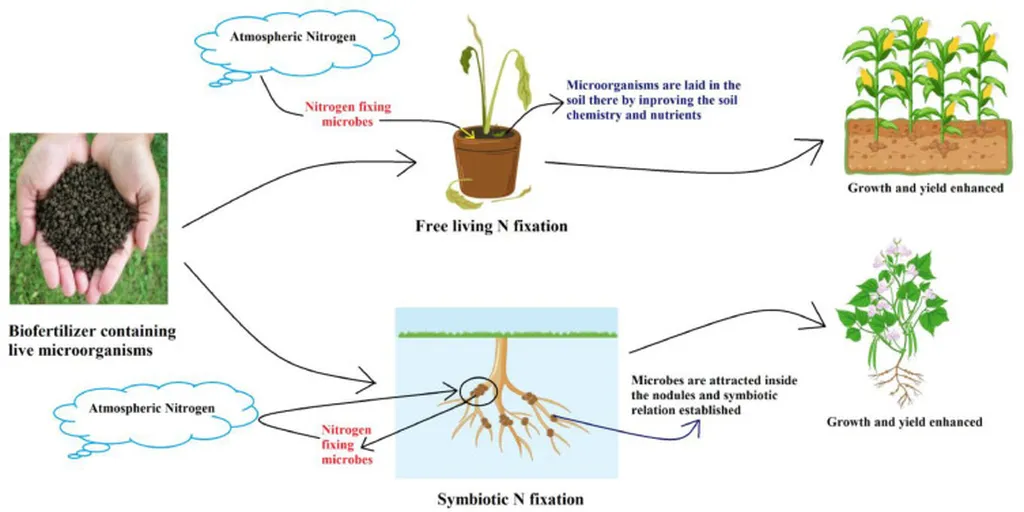In the heart of South Africa, a groundbreaking study is challenging the status quo of agricultural practices and offering a glimpse into a more sustainable future. Dr. Oluwaseun Emmanuel Shittu, a researcher at the North-West University’s Food Security and Safety Focus Area, has been delving into the intricate world of the rhizosphere microbiome, the complex community of microorganisms that inhabit the soil around plant roots. His work, published in the Environmental Microbiome (translated to English as ‘Environmental Microbiome’), is shedding light on how different fertilization systems can influence these microbial communities, with significant implications for the agricultural sector.
The study focuses on Allium ampeloprasum, a species that includes leeks, and investigates the impact of chemical fertilizers (CF) and biofertilizers (BF) on the plant’s rhizosphere microbiome. “We’ve known for some time that chemical fertilizers can boost yields, but there’s a growing concern about their impact on soil health and microbial diversity,” Dr. Shittu explains. “Our study aimed to quantify this impact and explore the potential of biofertilizers as a sustainable alternative.”
Using shotgun metagenomics sequencing, Dr. Shittu and his team analyzed soil samples from three different plots: one treated with chemical fertilizers (G1), one with biofertilizers (G2), and an uncultivated bulk soil plot (G3). The results were revealing. While all samples shared similar core microbial phyla, certain groups like Bacteroidota and Verrucomicrobiota were exclusively found in the biofertilizer plot (G2). Moreover, the biofertilizer plot harbored the most diverse microbial community, followed by the bulk soil, with the chemical fertilizer plot showing the lowest diversity.
“This suggests that biofertilizers can enhance microbial diversity, which is crucial for soil health and resilience,” Dr. Shittu notes. The study also identified specific genera, such as Dyadobacter, Verrucomicrobium, Streptomyces, and Haliangium, that were exclusively detected in the biofertilizer plot, hinting at their potential role in promoting plant growth and health.
The implications of this research are far-reaching. As the world grapples with the challenges of climate change and food security, understanding and harnessing the power of the rhizosphere microbiome could be a game-changer. “By promoting microbial diversity, biofertilizers could help create more resilient agricultural systems that are better equipped to withstand environmental stresses,” Dr. Shittu suggests.
Moreover, the study highlights the importance of considering the broader ecosystem when developing agricultural practices. “It’s not just about maximizing yields in the short term,” Dr. Shittu emphasizes. “We need to think about the long-term health of our soils and the sustainability of our food production systems.”
As the agricultural sector continues to evolve, research like Dr. Shittu’s is paving the way for more sustainable and resilient practices. By understanding and leveraging the power of the rhizosphere microbiome, we can take a significant step towards a more secure and sustainable future. The study, published in the Environmental Microbiome, serves as a testament to the potential of biofertilizers and the importance of soil health in our quest for agricultural sustainability.

